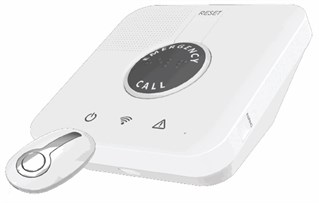
Do you want a really effective and affordable personal emergency response system for yourself, a friend or a loved one?
Then don’t commit your money, or sign a contract, with any personal emergency response system provider without knowing all the details.
Sure, you’ve looked at web sites and different prices. And while that is a good place to start, it only tells a part of the story. There are seven common mistakes people make when getting a these systems – think of this as your guide to getting what’s right for your situation.
Mistake # 1 – Signing a Long-Term Contract
Many companies will require a long-term contract for the personal emergency response system, and will expect a monthly payment for the contract term even if the system is no longer in use. They advertise a low price and then hide the contract term in the fine print. This leaves seniors and families paying for long term agreements for services they may not be using – some as long as 36 months! Always look for contracts that don’t require a long-term commitment.
Disclosure – MyIndependence, the personal emergency response system from My Alarm Center, does not require a long-term contract.
Mistake # 2 – Poor System Coverage | Incomplete Coverage
People are active. That means they need a personal emergency response system that performs well in all areas of their home, not just one or two rooms. Lower quality systems on the market lack the range necessary for whole home protection. Look for personal emergency response systems that specify coverage ranges and make sure these ranges provide whole home protection.
Disclosure – MyIndependence is noted for its excellent coverage range providing complete property coverage.
Mistake # 3 – Uncertified Monitoring Center
The most important part of any personal emergency response system is the monitoring center. This is the place that supervises the system, helps the system user, and summons help when needed. Too many monitoring centers aren’t fully certified. They lack the proper equipment, backup equipment, capabilities or personnel to meet minimum industry performance standards. You want to make sure the monitoring center is UL approved. A UL approved monitoring center undergoes rigorous and regular inspections to ensure the highest standards of performance in all situations. Also look for a monitoring center based in the United States with professional operators that fluently speak English.
Disclosure – MyIndependence is a personal emergency response center monitored in one of the industry’s finest, fully certified, alarm monitoring centers.
Mistake # 4 – The Personal Emergency Response System Requires a Specific Telephone Service
Some personal emergency response systems work only with a single wireless carrier. This can add quite a bit of money to the monthly cost of the system. Find a system that is compatible with land-line, VOIP, digital cable or bundled cable/internet/phone service packages.
Disclosure – MyIndependence works with land-line, VOIP, digital cable or bundled cable/internet/phone service packages.
Mistake # 5 – Paying Too Much
Some personal emergency response systems are available for a low monthly rate IF you pay high up-front equipment and system installation charges. Others offer a low introductory rate, and then jack up the price to astronomical levels after the introductory period. Don’t let either happen to you. Top quality personal emergency systems can be simple to install… just plug them in and turn them on. This saves costly installation fees. You should rent these systems rather than buy them and never start service without first understanding the monthly rate increase provisions within the monitoring services agreement.
Disclosure: There are no equipment, labor or activation costs with the MyIndependence personal emergency alert system from My Alarm Center, and no long term monitoring agreement is required. Monthly monitoring rates are just $24.95 per month.
Mistake # 6 – Getting Inferior Equipment
Make sure the wireless bracelet, armband or pendant included with the personal emergency response system is waterproof and has a long battery life. Too many personal emergency alert systems don’t include waterproof devices, rendering them useless when showering or bathing. Some of these units have a short battery life, requiring the user to frequently change batteries. As battery power diminishes, coverage ranges are reduced. The better systems have a battery life of about five years.
Disclosure: MyIndependence features waterproof units and the longest battery life available today.
Mistake # 7 – Not Filing for Medicaid or Medicare Reimbursement
Most people aren’t aware that a personal emergency response system may be eligible for reimbursement through Medicaid, Medicare or another insurance plan. Make sure to file a claim for reimbursement with your insurance plan and contact your insurance representative for details.
Disclosure: The MyIndependence personal emergency response system from My Alarm Center qualifies for most insurance reimbursement plans. Contact My Alarm Center for more details about MyIndependence.
